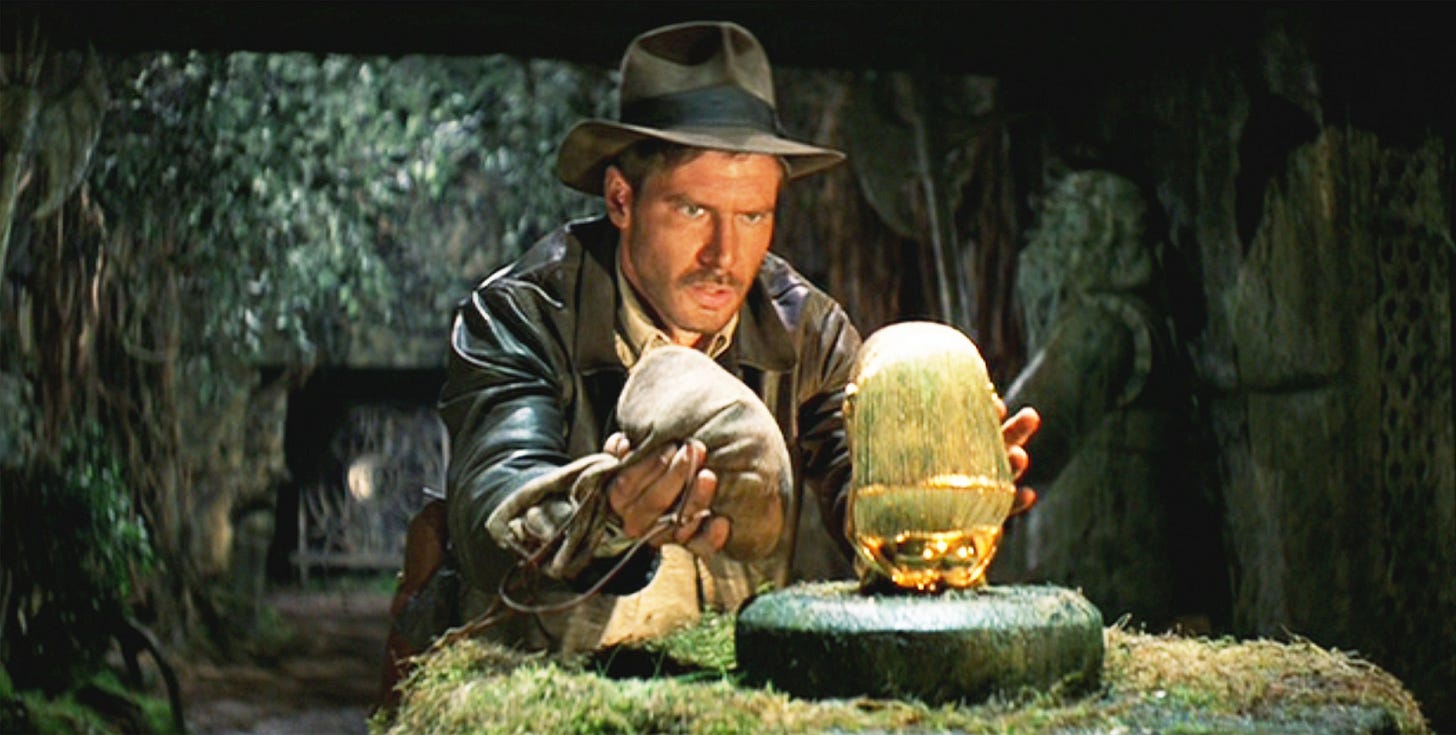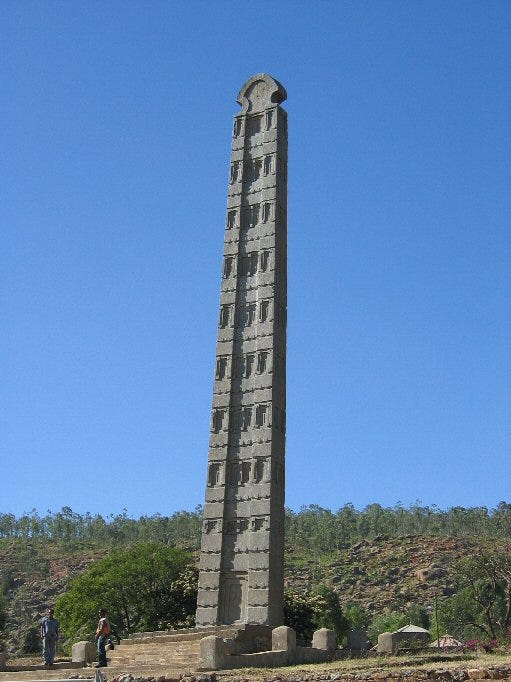The mystery of Axum and a treasure of biblical proportions
An Ethiopian landmark and its struggle for survival amidst regional unrest
Ark Of The Covenant
I remember watching Indiana Jones Raiders Of The Lost Ark for the first time in the mid 80’s in Nigeria on VHS. The weird thing was I’d seen the sequel The Temple Of Doom before finding out there was a film that came before it. I also had no idea Raiders Of The Lost Ark had a connection to Africa that neither the film nor any other commentator mentioned. Well, that’s why you’re here. We’re about to do just that.
The reason I’d seen Temple Of Doom is because the Nigerian tv network NTA kept replaying it randomly. When I say random, they’d show parts of this film whenever they had airtime to fill. You’d get to a point, they’d stop to show the News, not return to finish the film and then show another section of it at another date. Any kid who grew up in 80’s Nigeria will tell you, it was rare to watch a film from beginning to end on NTA.
Regardless, when I did see Raiders Of The Lost Ark, it was the first time I’d ever heard of the Ark Of The Covenant. Of course I’d seen Cecile B. DeMille’s The Ten Commandments but the idea that there was this chest that contained the fragments of the tablets God gave to Moses was mind blowing to me at seven years old.
I believed the film when it proposed the Ark was located in Egypt, something which sat much easier with the Eurocentric view of ancient Egypt. This was the 80’s and not long since Hollywood had Cleopatra as Elizabeth Taylor and Yul Brynner as Rhamses. Black Egyptians didn’t exist in ancient Egypt on film, something that didn’t change till a certain documentary was made by Netflix that caused the earth in modern Egypt to shift on its axis.
So you can imagine my astonishment when I found out the Ark Of The Covenant is actually believed to reside in a city called Axum in none other than Ethiopia.
An Empire Of Trade
From the 4th to the 7th centuries AD, Axum stood as a powerful empire, a significant trade center, and a melting pot of cultures. Its influence extended beyond the Red Sea, marking its place in global geopolitics. Today, remnants of its glory, such as monumental stelae and inscriptions, provide insights into its past.
Axum's rise to prominence was not just due to its strategic location but also its rich cultural heritage, architectural innovations, and forward-thinking approach.
The Ark
The Ark of the Covenant, as described in the Hebrew Bible, is believed to hold the stone tablets of the Ten Commandments given to Moses. Its religious importance is unparalleled. While its exact location has been a subject of debate and speculation, there's a strong belief in Ethiopia that the Ark has been in Axum for centuries, specifically in the Church of St. Mary of Zion.
According to Ethiopian tradition, the Ark was brought from Jerusalem to Axum by Menelik I, believed to be the son of King Solomon and the Queen of Sheba. This journey signifies more than just the relocation of a religious artifact; it represents a spiritual transition and the deepening of a bond between God and humanity.
Guardianship of the Ark in Axum is a sacred duty, passed down through generations of monks. These guardians are tasked with protecting this divine relic, ensuring its legacy remains intact.
Modern Challenges
The peace that Axum enjoyed was disrupted in 2021 due to the conflict in the Tigray region of Ethiopia. This conflict has raised concerns about the safety of the Ark.
Disturbing reports suggest a massacre occurred at the Church of Our Lady Mary of Zion in Axum. The conflict, stemming from tensions between the Ethiopian government and the Tigray People's Liberation Front (TPLF), has had devastating effects on the region's cultural heritage.
Experts, including those from Hamburg University, have expressed concerns about potential damage to invaluable artifacts and the risk of looting. There are suggestions that the attack on the church aimed to move the Ark to Addis Ababa. Other historical sites, like the ancient Debre Damo monastery, are also reportedly at risk.
The Broader Impact of the Conflict
The ramifications of this conflict go beyond the Ark. Tigray is home to a rich cultural heritage, including manuscripts, paintings, and oral traditions. The damage to the 7th-century mosque complex at Negash is a stark reminder of the conflict's impact on the region's heritage. The conflict not only causes physical damage but also threatens to erase narratives and legacies that form the fabric of Ethiopia's cultural identity.
Investigating these ancient African cities is always surprising not only in what I discover but also the fact that so much relevant and important history has been completely overlooked in the mainstream. The more people know about cities like Axum and its cultural relevance, the more likely the treasures of such cities will actually be preserved. Ethiopia has an amazing history and this is just another one of its many incredible stories.





I love the work you do and how you keep us informed with history that we never knew about.
As a Christian, I am glad U specifically talked about the history of the Bible with connection between God and human. 😊